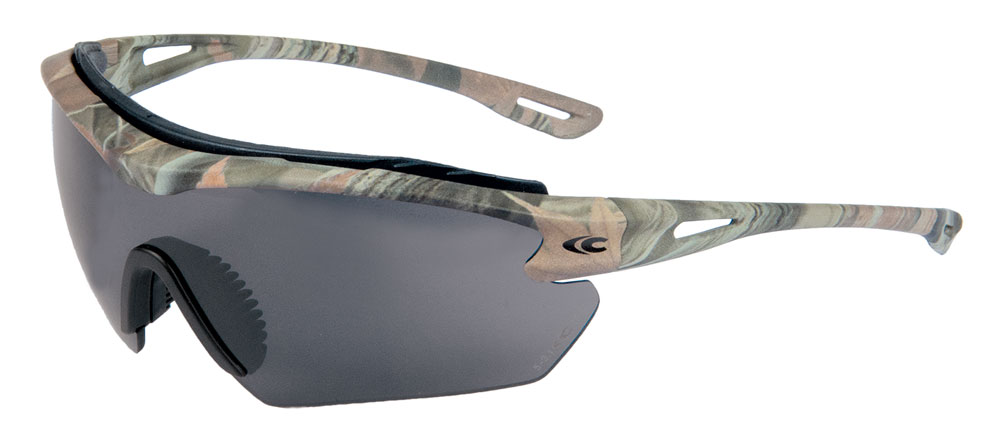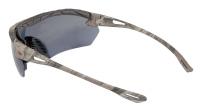GUNNER



LENS:
MATERIAL: polycarbonate
COLOUR: grey
CURVATURE: ![]()
STANDARDS:
EN 166 - General standard,
EN 172 - Solar protection filters for industrial use,
STANAG 4296 - Eye Protection For The Individual Soldier/Ballistic Protection
MARKING: ![]()
LENSES TREATMENTS: ![]()
![]()
![]()
![]()
FRAME:
FRONT MATERIAL: polycarbonate
MATERIAL OF TEMPLES: polycarbonate
MARKING: ![]()
FRAME FEATURES: ![]()
![]()
![]()
FURTHER TECHNICAL FEATURES:
WEIGHT: 33 g
AREA OF USE: outdoor works, mechanical works with risk of glare, agriculture, building, refineries.
PLUS: BALLISTIC RESISTANCE, STANAG 2920 - STANAG 4296
PACKAGING:
E019-B110 - Box: 10 single-packed glasses,
E019-K110 - Carton: 24 boxes (240 single-packed glasses)
Declaration of Conformity

BALLISTIC RESISTANCE
STANAG 2920 and STANAG 4296 are standards for the evaluation of ballistic resistance in all member countries of NATO. Unlike the compliance with the European Norm EN 166 which determines the impact resistance of a steel ball with a diameter of 6 mm and a mass of 0,86 g hitting the eyepieces at a speed of 45 m/s, the compliance with STANAG 4296 standard guarantees the ballistic resistance defined by STANAG 2920 standard, determining the ballistic resistance against bullets having a caliber of 3.6 mm (0,14″) and a weight of 325 mg, fired at a speed of 215 m/s, or 774 km/h (with the possibility of reaching even higher speeds as reported by the test report). STANAG 2920 does not define a minimum protection threshold in the same way as EN 166, but it allows to specify a speed V50 that represents the speed at which a bullet could perforate the eyepiece with a 50% probability. In addition, glasses complying with STANAG 4296 standard must also meet a number of requirements, such as:
• impact resistance according to the conditions defined by STANAG 2920 standard;
• criteria about their use: the glasses must be as light and comfortable as possible, have a maximum fogging reduction (through ventilation and/or an appropriate coating) and have a good resistance to scratches in case of prolonged use;
• optical quality: glasses must provide a visual field of at least 160° and must not distort vision;
• additional features: the glasses must have a gloss level as low as possible and must be compatible with the use of other protective elements.
Multimedia










